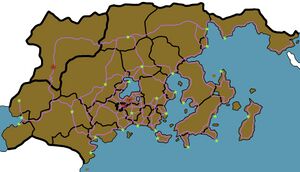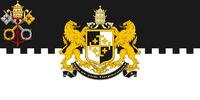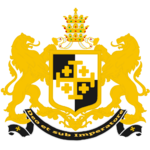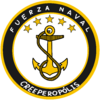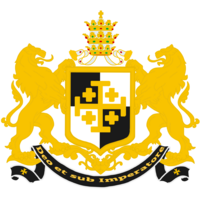Creeperopolis: Difference between revisions
mNo edit summary |
No edit summary |
||
| Line 97: | Line 97: | ||
[[Old Kingdom of Creeperopolis|Old Creeperopolis]] was established in 537 as a city-state Kingdom but was conquered and destroyed by the [[Caliphate of Deltino|Deltinians]] in 745.<ref>https://www.nationstates.net/nation=creeperopolis/detail=factbook/id=1174980</ref> Modern Creeperopolis was [[Creeperian Crusade|established in 1231]] as a Kingdom, and later was [[Declaration of the Creeperian Empire|declared an Empire]] in 1778.<ref>https://www.nationstates.net/nation=creeperopolis/detail=factbook/id=1174980</ref> Shortly after, a 7-year-long [[War of the Creeperian Succession|War of Succession]] raged in Creeperopolis from 1783-1790 between two rival brothers of the [[List of Creeperian Monarchs#House of Martínez|House of Martínez]], [[Manuel IV of Creeperopolis|Manuel]] and [[Salvador III of Creeperopolis|Salvador]]. Manuel IV was victorious. The Creeperian [[Revolution of 1833]] saw Salvador's grandson overthrow and kill Manuel IV becoming [[Adolfo III of Creeperopolis|Adolfo III]]. The next few [[List of Creeperian Monarchs|Emperors]] were short lived and inefficient, however [[Creeperian Civil War|Civil War]] struck in 1933 between the [[Catholic Imperial Restoration Council|Romerists]] and the [[National Council for Peace and Order|Miguelists]]. The deadliest war in Creeperian history was marked by war crimes, massacres, and even [[Creeperian Genocide|genocide]]. The war ended in 1949, and [[St. Romero I of Creeperopolis|Romero I]] would eventually be canonized as a saint in the [[Creeperian Catholic Church]] by [[Pope]] [[John Paul II]] as a martyr in 1989. Creeperopolis is a founding of the [[Terraconserva Council of Nations]]. Currently, [[Alexander II of Creeperopolis|Alexander II]] rules as Emperor, rising to power following the [[2003 Creeperian Coup D'état]] which deposed [[Alfonso VI of Creeperopolis|Alfonso VI]] and the [[October 16 Regime]]. | [[Old Kingdom of Creeperopolis|Old Creeperopolis]] was established in 537 as a city-state Kingdom but was conquered and destroyed by the [[Caliphate of Deltino|Deltinians]] in 745.<ref>https://www.nationstates.net/nation=creeperopolis/detail=factbook/id=1174980</ref> Modern Creeperopolis was [[Creeperian Crusade|established in 1231]] as a Kingdom, and later was [[Declaration of the Creeperian Empire|declared an Empire]] in 1778.<ref>https://www.nationstates.net/nation=creeperopolis/detail=factbook/id=1174980</ref> Shortly after, a 7-year-long [[War of the Creeperian Succession|War of Succession]] raged in Creeperopolis from 1783-1790 between two rival brothers of the [[List of Creeperian Monarchs#House of Martínez|House of Martínez]], [[Manuel IV of Creeperopolis|Manuel]] and [[Salvador III of Creeperopolis|Salvador]]. Manuel IV was victorious. The Creeperian [[Revolution of 1833]] saw Salvador's grandson overthrow and kill Manuel IV becoming [[Adolfo III of Creeperopolis|Adolfo III]]. The next few [[List of Creeperian Monarchs|Emperors]] were short lived and inefficient, however [[Creeperian Civil War|Civil War]] struck in 1933 between the [[Catholic Imperial Restoration Council|Romerists]] and the [[National Council for Peace and Order|Miguelists]]. The deadliest war in Creeperian history was marked by war crimes, massacres, and even [[Creeperian Genocide|genocide]]. The war ended in 1949, and [[St. Romero I of Creeperopolis|Romero I]] would eventually be canonized as a saint in the [[Creeperian Catholic Church]] by [[Pope]] [[John Paul II]] as a martyr in 1989. Creeperopolis is a founding of the [[Terraconserva Council of Nations]]. Currently, [[Alexander II of Creeperopolis|Alexander II]] rules as Emperor, rising to power following the [[2003 Creeperian Coup D'état]] which deposed [[Alfonso VI of Creeperopolis|Alfonso VI]] and the [[October 16 Regime]]. | ||
The Creeperian economy used to be heavily reliant on coffee but is now reliant on aircraft manufacturing, textiles, sugarcane, coal and iron exports, and oil refinery (not sold internationally). The country continues to struggle with massive wealth inequality, crime, [[List of Ongoing Terraconserva Conflicts| | The Creeperian economy used to be heavily reliant on coffee but is now reliant on aircraft manufacturing, textiles, sugarcane, coal and iron exports, and oil refinery (not sold internationally). The country continues to struggle with massive wealth inequality, crime, [[List of Ongoing Terraconserva Conflicts|four ongoing armed conflicts]], [[Corruption in Creeperopolis|corruption]], and poverty rates of 10-15%. The official currency of Creeperopolis has been the [[Creeperian Colón]] since the relinquishment of the [[Creeperian Dollar]] in 2003 following the [[2003 Creeperian Coup D'état|coup]]. | ||
= Etymology = | = Etymology = | ||
Revision as of 03:21, 28 December 2019
Holy Traditionalist Empire of Creeperopolis Santo Imperio Tradicionalista de Creeperopólis | |
|---|---|
| Motto: "Devajo Dios yel Emperador" English: "Under God and the Emperor" | |
| Anthem: Himno Real Creeperiano[1] (English: "Creeperian Royal Anthem") | |
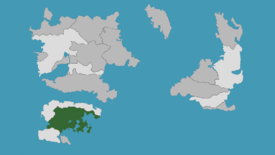 | |
| Capital and largest city | San Salvador 13°41′N 89°11′W |
| Official languages | Creeperian Spanish |
| Ethnic groups |
|
| Religion | Creeperian Catholicism (official and dominant) |
| Demonym(s) | Creeperian |
| Government | Unitary Creeperian Catholic Theocratic Absolute Monarchy |
• Emperor | Alexander II |
| Alexander Martínez Santos | |
| History | |
| September 15, 537 | |
• Deltinian Invasion | October 31, 745 |
• New Kingdom | February 8, 1231 |
• Constitutional Monarchy | March 8, 1565 |
• Republic | August 13, 1729 |
• Constitutional Monarchy | September 15, 1730 |
• Empire | October 8, 1778 |
| December 26, 1833 | |
| Area | |
• Total | 4,234,657 sq mi (10,967,710 km2) (5th) |
• Water (%) | 0.3 |
| Population | |
• 2018 estimate | 532 million (1st) |
• Density | 125.63/sq mi (48.5/km2) (4th) |
| GDP (nominal) | 2018 estimate |
• Total | $94.4 trillion (2nd) |
• Per capita | $176,800 (7th) |
| Gini (2019) | very high |
| HDI (2019) | medium |
| Currency | Creeperian Colóna (CCL) |
| Time zone | UTC-1, -2, -3, -4, -5, -6 (Creeperian Timezones) |
| Driving side | right |
| Calling code | +503b |
| Internet TLD | .hte |
| |
Creeperopolis, officially the Holy Traditionalist Empire of Creeperopolis (Creeperian Spanish: Santo Imperio Tradicionalista de Creeperopólis), is the largest nation on the Southern landmass. It is bordered to the north and the south by unclaimed territory, as well as the Senvarian Sea, to the west by the Sea of Castilliano and the Principality of El Salvador, and to the east by the Creeperian Gulf and the Bay of Salvador. Creeperopolis' capital and largest city is San Salvador. As of 2019, Creeperopolis has a population of 532 million.
Old Creeperopolis was established in 537 as a city-state Kingdom but was conquered and destroyed by the Deltinians in 745.[3] Modern Creeperopolis was established in 1231 as a Kingdom, and later was declared an Empire in 1778.[4] Shortly after, a 7-year-long War of Succession raged in Creeperopolis from 1783-1790 between two rival brothers of the House of Martínez, Manuel and Salvador. Manuel IV was victorious. The Creeperian Revolution of 1833 saw Salvador's grandson overthrow and kill Manuel IV becoming Adolfo III. The next few Emperors were short lived and inefficient, however Civil War struck in 1933 between the Romerists and the Miguelists. The deadliest war in Creeperian history was marked by war crimes, massacres, and even genocide. The war ended in 1949, and Romero I would eventually be canonized as a saint in the Creeperian Catholic Church by Pope John Paul II as a martyr in 1989. Creeperopolis is a founding of the Terraconserva Council of Nations. Currently, Alexander II rules as Emperor, rising to power following the 2003 Creeperian Coup D'état which deposed Alfonso VI and the October 16 Regime.
The Creeperian economy used to be heavily reliant on coffee but is now reliant on aircraft manufacturing, textiles, sugarcane, coal and iron exports, and oil refinery (not sold internationally). The country continues to struggle with massive wealth inequality, crime, four ongoing armed conflicts, corruption, and poverty rates of 10-15%. The official currency of Creeperopolis has been the Creeperian Colón since the relinquishment of the Creeperian Dollar in 2003 following the coup.
Etymology
The name Creeperopolis has its origins in the name of the native people group that founded the nation: the Creeperans. The suffix "-opolis," meaning city, was added to the end of the name to imply that the Old Creeperian Kingdom was mainly a city rather than a full fledged Kingdom.[5]
Overtime the suffix has been more and more redundant as the nation is not longer just a sole city but has expanded into a large empire covering vast territories. There have been efforts to remove the suffix but for the foreseeable future, the name Creeperopolis will stand.
History of Creeperopolis
Old Kingdom and Deltino
On September 15, 537, Duke Felipe Lorenzo established a kingdom. It was called the Kingdom of Creeperopolis, more commonly called the Old Kingdom of Creeperopolis or simply the Old Kingdom. The Kingdom was confined to the city of Salvador for most of its existence.
Felipe I reigned from 537-568. He was succeeded by his son Armando I who reigned from 568-598, when he was assassinated by his brother, Fernándo I. Fernándo I only reigned from 598-601 when he was executed on orders of Armando I's son who became Armando II. He reigned from 601-656. He was toppled by the son of Fernándo I, Felipe II. Felipe II only reigned from 656-661 when Armando II raised an army to retake the throne. He was again overthrown by Felipe II in 667, but he was himself overthrown again by Armando II once again in 675. By then, Armando II had grown old and was once and for all killed in a coup, again by Felipe II in 678. Felipe II had also grown old however, and was arrested and executed on orders of Armando III, Armando II's son, in 679. Armando III reigned until 713 when he abdicated in favor of his brother Fidel I. Fidel I reigned from 713-732, his death. He was succeeded by his son, Fidel II, who was captured and killed by the invading Deltinian forces in 745, ending the Old Kingdom of Creeperopolis.
The Caliphate of Deltino (734-1326) was having difficulties establishing full control over the northwestern region of their caliphate towards the end of the 1100's as the Creeperian inhabitants were overwhelmingly Creeperian Catholic and refused to be subjects of the Islamic caliphate. The Creeperian inhabitants also wished for a kingdom of their own once more. On May 23, 1225, Caliph Suleiman II of Deltino established the descendant of Creeperian nobility, Alfonso Maximiliano Martínez Amara, as Governor of the newly established Emirate of Rabadsun. Alfonso pressured the Caliph to rename his title as Prince of Rabadsun, but the Caliph refused as Alfonso was Catholic.
Suleiman II died in 1230 and was succeeded by his son, Suleiman III of Deltino. Suleiman III reinstated laws revoked by his father that restricted the practicing of any religion other than Sunni Islam in 1231, called the "One-Religion Decree". This was met by resistance by Shi'ites and Christians alike. Governor Alfonso used the basis of the "One-Religion Decree" to declare independence for the Emirate of Rabadsun as a Catholic Creeperian kingdom called the Kingdom of Creeperopolis on February 8, 1231.
Creeperian Crusade
First Phase
Alfonso I declared himself King of the Creeperans, or King of Creeperopolis, with the support of Pope Gregory IX. The establishment of the kingdom marked the first time that the Creeperans ruled over their own sovereign nation since the fall of the Old Kingdom. Officially the Kingdom of Creeperopolis, Creeperopolis was an absolute monarchy under divine right. Creeperian Catholicism was the kingdom's primary religion and Rabadsun was it's capital city. The flag of the kingdom was the flag of the emirate, a black and white triangular swallowtail pennant. The only difference is that the original flag contained the emblem of Deltino on it, which was cut out for all kingdom flags.
Alfonso I initially wished for warm relations with the Caliphate of Deltino and even offered his kingdom as a vassal to the caliphate in exchange for peace. Suleiman III would have none of it and declared jihad on the Kingdom of Creeperopolis in March 1231. Alfonso I requested that Pope Gregory IX declare a crusade to conquer Deltino, which he did on March 23, 1231, beginning the Creeperian Crusade.
The first massacre occurred on April 4, 1231, by the border between Deltino and Creeperopolis. Deltinian soldiers rounded-up 100-200 Creeperian Catholics and executed every single one by means of hanging, beheading, burning, or crucifixion. The massacre took place in the village of Alqarya, which was burnt after the massacre. There were few to no survivors from the village. Upon hearing the news of the massacre, Alfonso I used the massacre as motivation and as a reason to fight against the Deltinians. The Martyrs of Alqarya were declared the embodiment of the Crusade by Alfonso I. In 1232, in an effort to remove Islamic influence on his kingdom, Alfonso I renamed the capital from Rabadsun to Salvador, meaning Savior in Spanish. (English and Spanish were the primary spoken languages in Creeperopolis at the time.)
Following another massacre where 70 Catholics were killed by Deltinian soldiers, Alfonso I declared:
"Los’Creeperianos decimos no’al mal de ‘ste califato Deltiniano, y decimos no’al Califa, y decimos no’al Islam. En cambio, los’Creeperianos le diremos que sí’al Papa, sí a Creeperopólis, y sí’al Señor Dios."
In English:
"We Creeperans say no to the evil of this Deltinian Caliphate, and we say no to the Caliph, and we say no to Islam. Instead, we Creeperans will say yes to the Pope, yes to Creeperopolis, and yes to God the Father." The Creeperian Crusade now truly begins and Creeperian soldiers march with crosses on their armor to conquer the Caliphate
With the Creeperian Crusade truly beginning, the flag of the kingdom was updated. It would remain a black and white triangular swallowtail pennant, but the Deltinian emblem would be removed entirely and the hole in the flag (where the emblem was) would no longer be present.
In 1234, three years into the Crusade, Alfonso I established the Order of the Crusaders' Cross (OCC), a four class chivalric order awarded by the King himself to reward crusaders for exceptional service and merit to the cause of the Crusade. This would be the first Creeperian military award. In the same year, the Kingdom of Castilliano, to the south of the Deltinian Caliphate, declared their support for the Creeperans and began attacking the southern territories of the Caliphate to draw away soldiers from the Creeperian Front. From 1235-1238, Alfonso I lead a northern campaign to cut-off the northern caliphate to the ocean. Later, from 1242-1248, the Western Campaign, also called the Glorious Campaign, greatly expanded the Kingdom south and west. The campaign brought the Creeperian Kingdom to the Viridusian Peninsula for the first time and the native Atlántidans were introduced to Catholicism, which they adopted and abandoned Islam. Between 1248 and 1263, Creeperopolis was at general peace with few incursions with Deltino.
In 1258, Alfonso I ceded land on the outskirts of Salvador to Pope Alexander IV and the First State of the Church was established. The State of the Church, also called the Papal State, served as the epicenter of Christendom and the home of the Pope.
Alfonso I died on July 3, 1264, to old age. Pope Urban IV presided over his funeral on July 5 in Salvador. His son, Alfonso II, succeeded him to the throne and was coronated on September 15, 1264. He established English, Spanish, and Latin as the official languages of Creeperopolis in 1265, and it remains so today.
Alfonso II did not wage war with Deltino during his reign from 1264-1273, but the two often had border skirmishes. Alfonso II abdicated on April 8, 1273. His brother, Salvador I, became King the same day and was coronated on June 4, 1273.
He resumed the Crusade against the Deltinians in 1275 and pushed north and south, cutting off the Atlántidan Peninsula from the Deltinians by 1276. Many battles were fought, especially in the south. The famous Battle of Alsakhra was fought on November 4, 1281, where the outnumbered Creeperans routed the Deltinians, even though they were outnumbered 3 to 1. Salvador I called the battle the Miracle of Alsakhra. On June 2, 1285, Salvador I died from a fever. He had no heir to the throne, thus his brother, Manuel I, became King. From 1288-1301, Manuel I expanded Creeperian control into the northern parts of the Atlántidan Peninsula, attracting many converts. Manuel I died on January 13, 1301, to old age, ending Creeperian expansion into the Atlántidan Peninsula.
He was succeeded by his son, Miguel I, who is considered the greatest King in Creeperian history. He immediately began to rally up an army to fight against the Deltinians who he said, "...[have] been a thorn in the side of the Holy Creeperian nation for too long." He began his campaign, known as the First Campaign of Miguel I, in 1305 and pushed west into Deltinian territory. From 1305-1313, he continually pushed hard into northern Deltino. In 1317, Pope John XXII consecrated three archdiocese in the territory Miguel I had conquered: the Archdiocese of Salvador (which included the Papal State), the Archdiocese of San Romero, and the Archdiocese of San Miguel.
Miguel I launched the Second Campaign of Miguel I in 1321 and pushed hard to the capital of Deltino, Almadinat Almuqadasa. By 1324, the city was surrounded by Creeperian forces and the Siege of Almadinat Almuqadasa began. The Caliph at the time, Selim IV of Deltino, called for reinforcements from the southern parts of his caliphate. Although the city bordered a lake which he could escape from he declared that a true Muslim does not retreat and he stated that he will defend the city with his life. Deltinian reinforcements were approaching the city, but the Creeperans won the ensuing Battle of Altal, and the Muslims retreated.
On June 13, 1326, in what was called the Miracle of Almadinat Almuqadasa, the walls of the city finally gave way after two years of being besieged. The 500,000 strong Creeperian army poured into the walled city and began massacring the population, against the orders of Miguel I, which was to issue a no quarter on soldiers. Caliph Selim IV was captured by Creeperian soldiers, tortured, and burnt at the stake, effectively ending the Deltinian Caliphate. By the time the Massacre of Almadinat Almuqadasa was over, 200,000 lie dead in the street. The southern reaches of the Caliphate heard the news and three Emirates broke away and declared their independence from the Deltinian Caliphate: the Emirate of Jakiz, the Emirate of Helam, and the Emirate of Abdan. Their Emirs, Ohmad I, Mehmed I, and Orhan I, each declared jihad on Creeperopolis.
Meanwhile, Miguel I celebrated the destruction of the Caliphate of Deltino and declared that the Lord had intervened on behalf of the Creeperans. Pope John XXII also celebrated the news in Salvador. The flag of Creeperopolis was also altered to feature the Cross of Creeperopolis, the Coat of Arms of Creeperopolis, where the Emblem of Deltino would have been. The fall of Almadinat Almuqadasa, renamed to San Miguel, marked the end of the First Phase of the Creeperian Crusade.
Second Phase
With the declaration of jihad by the three Emirates of the south, Miguel I began to rally support for a continued Crusade. The three Emirs declared their alliance against the Creeperans in 1326 and began their attacks the following year. The Creeperans quickly advanced into Jakiz however, and the Emirates went on the defensive for the entirety of the Second Phase.
In 1327, the client state of the Principality La'Libertad del Sur (The South[ern] Liberty) was established in the northern Atlántidan Peninsula.
Miguel I began the first campaign against the emirates in 1331 and it lasted until 1334, gaining much ground. The second campaign began in 1340. The same year, the capital city of Jakiz, Shata' Albahr, was surrounded by Creeperian Forces. The following year, the capital of Abdan, Alshshati, was also surrounded. Alssahil, the capital of Abdan, followed suit in 1343. All three cities fell in 1345 and all their Emirs, Mehmed I, Orhan I, and Ohmad I, were all executed. The fall of the three emirates marked the end of the Creeperian Crusade, from 1231-1345. The event was celebrated by King Miguel I and Pope Clement VI. In 1346, Shata' Albahr was renamed to Denshire. The following year, Alshshati was renamed to San Pablo. Finally in 1349, Alssahil was renamed to San Nicolás.
Although the Crusade was over, Miguel I refused to declare the Crusade was over and continued to conquer more territory from Muslim hands. In 1351, he launched an invasion of the island of Jazira, where many fled following the fall of Deltino. The island was secured as Creeperian territory in 1354 and renamed to the island of San Pedro (island). Miguel I then proceeded to claim many Atlántidan islands in the Bay of Atlántida from 1355-1356, solidifying Creeperopolis' presence and influence in the area. The client of South La'Libertad was also expanded southward during this time. The northwestern fronts of the Kingdom were deemed a breakaway risk by Miguel I. Because of this, he sent in a permanent military presence to the area. A client state was also established west of the Creeperian border called the Principality of San Miguel, to reflect the Archdiocese of San Miguel which it bordered.
In 1364, Miguel I rallied up soldiers to expand the Kingdom westward in the south as a part of his continued Crusade. He began his campaign in 1365 and added new territories to the kingdom. However, Miguel I would die to old age on April 27, 1365. He was succeeded by his son, Adolfo I, who officially declared the Creeperian Crusade over stating, "The [Creeperian] Crusade can no longer live, as its leader has passed from us, and he is now crusading in Heaven with the Lord and His angels." Pope Urban V presided over Miguel I's funeral on May 10, 1365, and he coronated Adolfo I on June 30, 1365.
Post-Crusade Troubles
Throughout Adolfo I's reign from 1365 to his death on May 3, 1385, the kingdom did not expand its territory as Adolfo I wished to rebuild the kingdom and make it a great powerhouse. However, on June 13, 1384, the anniversary of the Fall of Almadinat Almuqadasa, Deltinians throughout the south of Creeperopolis, where the three emirates once where, rose up in open rebellion against the Creeperian government. The uprising was called the Deltinian War and the Deltinians had various leaders, the most outstanding being Ohmad II, a descendent of Ohmad I.
Adolfo I died in 1385, and was succeeded by his son Miguel II. Miguel II was harsh on the Deltinians and declared no quarter. Many Deltinians were killed in the war, roughly 30,000-200,000. The war was brutal and a crushing defeat for the Deltinians. The war ended with the death of Osman II in the Battle of San Nicolás in 1403. Pope Boniface IX would praise Miguel II for his leadership against the Deltinians. Miguel II would later die in 1405 and would be succeeded by his son Miguel III.
Miguel III wished to begin expansion of Creeperopolis once more. In 1407, he ordered the annexation of the vassal state of San Miguel. Pope Gregory XII would later redefine the borders of the three existing archdioceses and would go on to consecrate seven new dioceses and two new archdioceses in the south of Creeperopolis in 1409. Beginning in 1410, Miguel III began expanding Creeperopolis across the southern shore of Lake San Salvador, where he established the City of San Salvador. Surrounding the newly established city would be the vassal state of the Principality of San Salvador in 1412. In 1416, a new vassal, the Principality of Santa Ana, was established to the northwest of Lake Salvador. Continuing the trend of expansion, the army occupied the remaining shoreline in 1418, eventually establishing the vassal state of the Principality of Nuevo San Salvador in 1419. To increase influence in the Bay of Atlántida, Miguel III ordered his army to occupy the western shoreline of the Atlántidan Peninsula in 1423, a move which the native Atlántidans did not approve of.
In 1440, peasants across the kingdom rose up against the King and demanded an end to serfdom. The most radical of the peasants even demanded a democracy. Most revolts occurred in South La'Libertad, mostly led by the Atlántidans, Nuevo San Salvador, San Salvador, San Miguel, and in the area where the three emirates once were. The war came to be known as the Creeperian Peasants' War. The military was ruthless and over 500,000 serfs died. The Treaty of Salvador ended the war in 1443. Santa Ana and San Salvador were annexed into Creeperopolis, Nuevo San Salvador was militarily occupied by Creeperopolis, and South La'Libertad along with several islands in the Bay of Atlántida were to be granted independence as the Kingdom of Atlántida. Miguel III was assassinated on January 1, 1445, by soldiers who had been discontent with the outcome of the war. Miguel III was succeeded by his brother, Manuel II, who had the conspirators hanged. Pope Eugene IV presided over Miguel III's funeral. In 1445, Manuel II had the occupied territory of Nuevo San Salvador annexed into Creeperopolis.
Beginning in 1453, Manuel II began a campaign to integrate the Senvarians and Senvekians into Creeperopolis. The Old Kingdom of Senvar-Senvek was annexed into Creeperopolis by 1456. This period was called the Three Years' War. After Manuel II died in 1487 and his son Miguel IV became King, Deltinians in the south rose up in rebellion against the new King. The Ten Years' War raged from 1487-1497 in southern Creeperopolis, ending in another Creeperian victory.
On September 1, 1500, the King was found dead in his palace and it was seemed he was murdered. Before his murder could be investigated, his son, Miguel V, hurriedly stated that his younger brother, Prince Alfonso, had killed the king. He has Alfonso executed and his reign was solidified.
In 1503, Protestants in the country, discontent with the absolute power of the Catholic King, rose up against the monarchy. Miguel V immediately began sending in soldiers to kill anyone suspected of assisting the rebels, beginning the second bloodiest war in Creeperian history: the Twenty Years' War. In the second year of the war, Senvar and Senvek simply left the Kingdom to form their own nation: the Kingdom of Senvar-Senvek. By 1510, both sides have experience many massacres, with numbers reaching upwards of 300,000-1,000,000 dead in massacres alone. The uprisings were rampant in the southeastern Kingdom. The Protestants had been defeated in 1523 after the fall of Adolfosburg, their capital city. Over 5,000,000 people died in the war. It quickly became apparent that Miguel V was a bloodthirsty ruler. When a small group a peasants rose up in San Miguel in 1535, Miguel V ordered the army to march into rebel territory. The ensuing Peasants' Massacre killed upwards of 500,000 peasants.
Miguel V was becoming a very unpopular tyrannic ruler, and had had two assassination attempts, one in 1536 and the other in 1547. Up to 1,000 were arrested and executed following each attempt. By 1555, his own body guards were tired of Miguel V's bloody reign. On September 1, 1555, Miguel V's body guards attacked and assassinated him in his palace. His son, Miguel VI, succeeded him. Only two days later, Miguel VI would be assassinated himself by the same bodyguards who declared the son of the murdered Prince Alfonso as the true King Alfonso III. The so-called Coup of 1555 was successful.
Alfonso III officially retired the title "King of the Creeperans" in 1555. He instead took the title "King of Creeperopolis."
Ten years after Miguel V's death, many wealthy landlords and aristocrats demanded a say in how the country should run, and fearing a revolt, Alfonso III gave in and established a Parliament in Creeperopolis, ending the absolute monarchy. The monarchy had now become a Constitutional Monarchy with the King having limited powers, while the Parliament controlled most of the government.
The first general election was held in 1565, but only landowning Creeperian men could vote. The turnout was 11.2% for this election. Two main political parties formed in Parliament, the Conservative Party, which was generally more pro-monarchy, and the Liberal Party, which was generally more anti-monarchy. The CP was center-right to right-wing while the LP was center-left to left-wing. The Conservatives won the 1565 election and won 67 of the 100 seats in Parliament. Alfonso Moreno became the first Prime Minister of Creeperopolis on March 8, 1565.
Constitutional Monarchy
Alfonso Moreno was a Conservative and preferred that the monarchy remain in power. He passed a law in 1566 that states that under no circumstances may the position of King be abolished and that the monarchy must not be infringed upon. The Monarchal Protection Bill was passed 66-34 and was approved by Alfonso III.
Alfonso Moreno also established that all future Creeperian general elections for Parliament would occur on the second Saturday of January every five years and that each term is five years long. Each term begins on March 8 and ends on March 8 five years later. There were no term limits. Should a Prime Minister die or resign before he completes his term, the Deputy Prime Minister would become Provisional or Acting Prime Minister until the Parliament can vote with a 2/3 majority a new Prime Minister. Should the Provisional or Acting Prime Minister die or resign, the most senior member of Parliament would become Provisional or Acting Prime Minister until, again, the Parliament votes for a new Prime Minister with a 2/3 majority. The bill was called that included all these premises was called the Parliamentary Democratization and Electoral Bill, which passed unanimously 100-0.
The Judicial Bill was passed in 1568 which established a Supreme Court in Creeperopolis which was to be an unbiased institution that neither the Parliament nor the King could influence. The bill also unanimously passed 100-0. The bill further drained the power of the King. Pope St. Pius V was not content with removal of power from the King.
In the 1560 general election, the Conservatives kept a 61-39 majority and Alfonso Moreno served a second term. The Conservatives would in fact keep control of the Parliament from 1565-1600 as the Conservative Party continued to dominate the Liberal Party. During the Conservative years of domination, King Alfonso III died in 1587 and was succeeded by Carlos I. The Liberal Party won by a narrow margin in 1600, 51-49, but the Liberals elected Emmanuel Sanchéz as Prime Minister nonetheless. In 1603, Carlos I died and was succeeded by Salvador II. By 1617, two families began to dominate Creeperian politics: the Conservative Funes Family and the Liberal Moreno Family (which swapped sides after the 1580 general election). From 1617-1655, the Liberals under the Moreno family dominated the Parliament. During the period of Liberal dominance, Salvador II died in 1634 and was succeeded by Alfonso IV. By the mid-1600's, the monarchy had become extremely obsolete and unnecessary, while the Parliament grew in power.
The Liberal Party won the 1665 general election defeating the Conservative Party 54-46. José Moreno was chosen as Prime Minister. The following year in 1666 Alfonso IV died and was succeeded by Maximiliano I. The Parliament took this opportunity of new leadership and narrowly passed the Parliament Enabling Act, a bill which stripped all power from the monarch, making him simply a figurehead who cannot influence any aspect of the government, by a 51-49 margin. In reaction, the Conservative Party ruled the Parliament from 1670-1695 but reluctantly didn't attempt to overturn the PEA as they feared starting a civil war. The disappointed citizenry then elected the Liberal Party from 1695-1725. Maximiliano I would die in 1697 and was succeeded by Carlos II. During the 1725 election, the Liberal Party won by a 75-25 margin, the most lopsided election result in Creeperian history. During the domination of the Liberal Party, the Parliament began to secularize Creeperopolis and remove any influence of Catholicism, much to the disapproval of Popes Innocent XII, Clement XI, Innocent XIII, and Benedict XIII.
King Carlos II died on June 18, 1728, and was succeeded by his son Carlos III. Carlos III wished to restore the monarchy to its former glory of absolute power. Carlos III planned for a year and gathered support of a section of the military, even the support of Pope Benedict XIII. Carlos III staged the Monarch's Revolution on July 4, 1729. The military forces still loyal to the Parliament fought against Carlos III's forces and eventually succeeded. All of the revolutionary leaders were arrested.
Carlos III, Adolfo Martínez, Óscar López, and José Guerrero were all put on trial for treason. Adolfo Martínez and Óscar Lopez were sentenced to life imprisonment while Carlos III and José Guerrero were sentenced to death. José was executed by hanging on August 1, 1729. Carlos III was publicly executed in the Salvador City Plaza on August 13, 1729. His last words were:
"’Spero que algún día se pueda restaurar el poder y la’gloria de la’monarquía, el Catolicismo y Creeperopólis. En ’stos tiempos de desesperación, te rogamos a Dios."
In English:
"I hope that one day, the power and glory of the monarchy, Catholicism, and of Creeperopolis may one day be restored. In these times of despair, we pray to you God."
Shortly after the execution of Carlos III, the Liberal Prime Minister, Orlando Moreno, declared that the monarchy which had lasted 498 years up to that point has been abolished. He proclaimed the establishment of the Republic of Creeperopolis.
Republic and Monarchal Revival
On September 15, 1729, Orlando Moreno announced that Salvador will no longer be the capital of Creeperopolis. He declared that Adolfosburg will be the new capital of Creeperopolis.
In October 1729, rumors began to flood the Parliament that the State of the Church somehow played a role in the Monarch's Revolution. They demanded to have a hearing with Pope Benedict XIII, but he refused to attend any sort of hearing. He silently slipped out of Creeperopolis and left for exile in Atlántida in December 1729. By the time Orlando Moreno heard that the Pope fled to Atlántida, he was long gone. The Prime Minister then declared that the State of the Church is no more and ceased to exist on December 25, 1729.
The year passed by but the citizens of Creeperopolis wished for the monarchy to return. The people began a protest on September 12, 1729, which quickly turned into a riot by September 13. On September 14, Orlando Moreno relented and gave into the riots. He officially pardoned Adolfo Martínez on September 15 and he proclaimed King Adolfo II. The Republic of Creeperopolis ceased to exist, and the Kingdom of Creeperopolis was reestablished following the Peoples' Revolution. Adolfo II celebrated the 500 year anniversary of the establishment of the Kingdom on February 8, 1731 which gained him the people's support. Despite the people's support for the King, the Liberals maintained Parliamentary power from 1730-1750, and then again from 1765-1770.
In the 1770 general election, the Liberal Party won 52-48 and chose Fernando Moreno as the Prime Minister. Following the election in January 1770, Adolfo II died and was succeeded by Manuel III.
Full Restoration and Empire
Manuel III looked up to Carlos III the Martyred as an inspiration and role model. He wished to restore the monarchy to its former glory, or die as a martyr in full glory in his efforts to make Creeperopolis holy again. On July 4, 1771, the anniversary of the Monarch's Revolution, Manuel III ignited the Revolution of Restoration. With the support of the military, the citizens, and Pope Clement XIV, Manuel III successfully regained the absolute power of King. The Parliament stood no chance with all 100 members surrendered and arrested. All members of the Conservative Party were set free while Manuel III had all Liberals executed. He had Prime Minister Fernando Moreno publicly executed in retaliation for the death of Carlos III.
On May 4, 1778, Manuel III declared himself Emperor of Creeperopolis, thus establishing the Empire of Creeperopolis, or the Creeperian Empire. In June 1778, the capital was moved from Adolfosburg to San Salvador. Later that month, Manuel III ceded land near San Salvador to Pope Pius VI, which became known as the State of the Church, or Papal State (also called the Second Papal State or Second State of the Church). Manuel III also abolished the Supreme Court which was constantly deeming his actions unconstitutional.
Manuel III died in 1783, and he became known as Manuel III the Great.
Succession War
With the death of Manuel III, his sons, Manuel and Salvador, both declared themselves Emperor of Creeperopolis: Manuel IV and Salvador III. The War of the Creeperian Succession raged on from 1783-1790. The war ended when Salvador III was assassinated. The war claimed 1.2 million lives, the fourth deadliest in Creeperian history.
Manuel IV and Adolfo III
After being victor in the war, Manuel IV began to stagnate Creeperopolis, being a very unpopular and inefficient Emperor. Prince Adolfo Martínez, son of Salvador Martínez Ortega and grandson of Salvador III, wished to regain glory for his branch of the family and began to plot a coup. As a Lieutenant-Marshal, Adolfo gathered a following of soldiers who supported him, and many wished to establish him on the throne, as Manuel IV was growing old and was becoming an unpopular Emperor. Soldiers in the army began to only take orders from Adolfo by 1833. Manuel IV had enough of what he believed to be a mutiny against his orders, and stripped Adolfo of his rank and kicked him out of the Imperial Army on June 12, 1833.
Upon hearing of the firing of Adolfo, many Generals and Field Marshals grew a bad taste for Manuel IV and defected to the cause of Adolfo. Adolfo had begun to rally up supporters in Helam and began marching his troops to San Salvador on June 13. Manuel IV realized that the military is turning against him and orders for Adolfo's arrest, along with the arrest of any supporters. Manuel IV had Field Marshal Fidel Amaro Sánchez order the troops following Adolfo to arrest him, but the soldiers refused to listen. Amaro was then arrested by Adolfo's soldiers and executed via firing squad, marking the beginning of the Revolution of 1833. Upon hearing the death of his most loyal Field Marshal, Manuel IV ordered the palace guards to arm themselves and defend the San Salvador Imperial Palace to the death while he and his family hid within the palace preparing for the end, as the entire military has turned against him. Adolfo recruited the help of Miguel Cabañeras Gutiérrez, a former Field Marshal who fought alongside Salvador III during the War of Succession, to depose Manuel IV from power. Adolfo promoted Miguel to Field Marshal, signaling to the soldiers and officers that Adolfo is declaring himself as the true Emperor of Creeperopolis.
The soldiers arrived at the Imperial Palace at 12 noon and began to fire at the palace guards defending the palace. The well trained soldiers overwhelmed the outside defenders and infiltrated the palace. Cabañeras declared that no-quarter will be given to the palace guards, leading to very heavy guard fatalities. The army had secured the palace by 3pm and had Manuel IV and his family captured and arrested. At 3:30pm, Adolfo had Manuel IV and his heir, Grand Prince Manuel Martínez Figueroa, executed to prevent any claimant from Manuel IV's lineage arising to challenge his own power. The rest of his family was placed under house arrest and moved to the Salvador Palace.
Adolfo declared himself Emperor of Creeperopolis and the Creeperans, Adolfo III, at 4pm, thus beginning his reign over Creeperopolis and establishing Salvador III's lineage on the Imperial throne of Creeperopolis. Later that day, Adolfo III was given a letter from Pope Gregory XVI himself congratulation him on his rise to power. He hopes that Adolfo III can revive and strengthen Creeperopolis's Catholic heritage. Adolfo III was officially coronated on September 15, 1833.
Adolfo III reversed many secularist policies imposed by Manuel IV during his reign, allowing the Catholic Church to have enormous influence over the Empire. The Canon Catholic Law was imposed over the Empire as the highest law of the land in 1834 and the Ten Commandments were instituted as the highest of the highest laws. Creeperopolis is commonly labeled as a Theocracy because of these laws. Adolfo III has vastly expanded the military power of Creeperopolis during his reign.
On March 1, 1839, Adolfo III gave an ultimatum to the neighboring Kingdom of Senvar-Senvek to accept a peaceful annexation into Creeperopolis or face a devastating invasion. King William III's military advisors begged him to refuse the ultimatum and go to war with Creeperopolis but he knew that his military was no match for Adolfo III's military might so he caved into the ultimatum. Senvar-Senvek was absorbed into Creeperopolis on March 5, 1839 and Adolfo III was declared King Adolfo I of Senvar-Senvek. William III was given compensation by free residence at the Palace of Port Senvek and Adolfo III promised that he and his family will be cared for. He gave William III power over the administration of Port Senvek as a vassal to him.
The day the annexation was carried out, a militant rebel group declared war on Creeperopolis with the former King's brother, Frederick Schuessler I, as its commander.
The ensuing First Senvarian Insurgency would last until June 15, 1857, ending with the capture and execution of Frederick Schuessler. Creeperopolis would however give concessions as autonomy for the departments of Senvar and Senvek.
A second insurgency would begin in 1878 and would last until 1888, outliving Adolfo III, who would be succeeded by Maximiliano II. The war ended after the assassination of Otto Schuessler.
Parliament Reestablished
In 1888, a second Parliament was established on demand of the people protesting the insurgency. Several political parties were formed during this time. During the reigns of Maximiliano II, Alexander I, Alfonso V, and Adolfo IV, Creeperopolis remained fairly stable politically, but was a disaster economically.
The economy was heavily reliant on coffee products, but due to coffee growth failures from 1907-1927, the economy suffered heavily and annual GDP growth was negligible to non-existent.
With the death of Adolfo IV, his two sons, Romero I and Miguel VII declared themselves as the legitimate Emperor beginning the Creeperian Civil War.
Civil War
The Creeperian Civil War (Creeperian Spanish: Guerra Civil Creeperiano) was a major civil armed conflict within the Holy Traditionalist Empire of Creeperopolis, which also spilled over into the Kingdom of Castilliano and Kingdom of Atlántida, which lasted from January 2, 1933 to September 30, 1949.
The war was fought between the (generally) right-wing, Catholic Romerists and the (generally) left-wing, Atheist/Secular Miguelists. The Creeperian Civil War was the deadliest and bloodiest war in Creeperian history with up to 40 million Creeperans dead, and up to 50 million more wounded or missing. The war was marked by atrocities committed by both sides of the war, the Romerists against Communists and Atheists, and the Miguelists against Catholics. In 1934, the Republic of Senvar-Senvek, led by the Senvarian Liberation Front, declared independence as a breakaway state. (The state continues to exist. See Third Senvarian Insurgency.)
The war also saw heavy use of tanks, aircraft, chemical weapons, and air raids. Starting in 1933, the Miguelists initiated the Creeperian Genocide against Creeperian Catholics, Romerists, and Salvadorans. Following the war, hundreds of Miguelists were executed for war crimes. Several political parties were banned and dissolved following the war, however four parties and a military front, the Creeperian People’s Catholic Front (FCPC, Cristeros), the Creeperian Catholic Party (PCC), the National Conservative Party (PCN), the Catholic Royalist Party (PRC), and the Creeperian Pro-Fatherland Front (FPPC), merged to form the Nationalist Creeperian Catholic Royal Initiative and the Pro-Fatherland Unification Front (IRCCN y la’FPPU, Creeperian Spanish: Iniciativa Real Católica Creeperiano Nacionalista y la’Frente Pro-Patria de Unificación).
Romerist Emperor and Commander-in-Chief Romero I Adolfo Martínez Galdámez was proclaimed a saint in the Creeperian Catholic Church in 1983 by Pope John Paul II as a martyr for Creeperopolis and the Church.
Post-Civil War to Present
Following the civil war, human rights, political stability, and economic growth were serious issues which were rarely if ever by the reigns of Romero II, Adolfo V, Romero III, and Alfonso VI.
In 1952, the Terraconserva Council of Nations (TCN) was established to prevent another event like the Creeperian Civil War or Creeperian Genocide from happening again through peace and diplomacy. Creeperopolis joined the organization as a founding member on October 22, 1952, along with Quebecshire, Eminople, Greater Sacramento, and New Gandor.
The Salvadoran Revolution of 1956 saw Romero II use the Creeperian Armed Forces crush the revolutionary forces of the Salvadoran Republic, straining relations for years.
In 1979, Adolfo V declared on the gang Mara Salvatrucha. Since then, Creeperopolis has been fighting two internal conflicts: the Third Senvarian Insurgency and the Mara War.
Creeperopolis is currently ruled by Alexander II who came to power following the 2003 Creeperian Coup D'état which deposed Alfonso VI and his regime. Since Alexander II's rise to power, the Creeperian economy has skyrocketed in what is called the Miracle of Creeperopolis.
Human rights, insurgent and gang violence, and political stability remain serious issues.
Geography
Climate
Creeperopolis has a diverse set of climates ranging from desert to tropical with pronounced wet and dry seasons. Temperatures vary greatly depending on the time of year.
The best time to visit Creeperopolis would be from November to March to avoid the torrential rainfall or from April to October to avoid the scorching heat, depending on personal preferences. The most balanced months are March-April, July, and October-November. The Creeperian dry/hot season extends from November to March. There are typically two wet seasons: April to June then again from August to October; July is the most balanced month with cool temperatures and moderate rainfall.
| Climate data for Creeperopolis (San Salvador) 1973-2018, extremes 1973-present | |||||||||||||
|---|---|---|---|---|---|---|---|---|---|---|---|---|---|
| Month | Jan | Feb | Mar | Apr | May | Jun | Jul | Aug | Sep | Oct | Nov | Dec | Year |
| Record high °F (°C) | 127.8 (53.2) |
114.9 (46.1) |
107.6 (42.0) |
98.2 (36.8) |
86.4 (30.2) |
73.1 (22.8) |
71.2 (21.8) |
81.4 (27.4) |
87.1 (30.6) |
93.2 (34.0) |
100.3 (37.9) |
111.4 (44.1) |
127.8 (53.2) |
| Average high °F (°C) | 100.8 (38.2) |
93.9 (34.4) |
90.7 (32.6) |
79.4 (26.3) |
69.9 (21.1) |
67.9 (19.9) |
66.7 (19.3) |
71.7 (22.1) |
74.1 (23.4) |
79.2 (26.2) |
82.3 (27.9) |
97.9 (36.6) |
81.2 (27.3) |
| Daily mean °F (°C) | 83.8 (28.8) |
79.1 (26.2) |
73.7 (23.2) |
62.7 (17.1) |
52.9 (11.6) |
51.9 (11.1) |
48.9 (9.4) |
53.0 (11.7) |
56.7 (13.7) |
62.1 (16.7) |
68.2 (20.1) |
79.6 (26.4) |
64.2 (17.9) |
| Average low °F (°C) | 66.8 (19.3) |
64.3 (17.9) |
56.6 (13.7) |
45.9 (7.7) |
35.9 (2.2) |
29.7 (−1.3) |
31.1 (−0.5) |
34.9 (1.6) |
39.3 (4.1) |
44.9 (7.2) |
54.0 (12.2) |
61.3 (16.3) |
47.1 (8.4) |
| Record low °F (°C) | 47.8 (8.8) |
39.3 (4.1) |
29.5 (−1.4) |
14.4 (−9.8) |
8.6 (−13.0) |
−3.4 (−19.7) |
−12.1 (−24.5) |
2.1 (−16.6) |
13.8 (−10.1) |
25.3 (−3.7) |
32.2 (0.1) |
40.5 (4.7) |
−12.1 (−24.5) |
| Average precipitation inches (mm) | 0.01 (0.25) |
0.11 (2.8) |
1.45 (37) |
6.93 (176) |
10.45 (265) |
4.45 (113) |
3.42 (87) |
7.78 (198) |
12.91 (328) |
5.32 (135) |
1.12 (28) |
0.05 (1.3) |
54 (1,400) |
| Source: San Salvador Weather Service (Servicio Meteorológico de San Salvador, SMSS) | |||||||||||||
Government and Politics
The 1833 Constitution is the highest legal authority in the country. Creeperopolis has a government self-described as a "Unitary Creeperian Catholic Theocratic Absolute Monarchy."
A theocracy is established through Title II, Chapter I, Section I, Article II of the Constitution: "The Holy Traditionalist Empire of Creeperopolis is a sovereign Creeperian Catholic state with Creeperian Catholicism as its religion; God's Book, the Holy Bible, and the teachings of His Son, the Lord and King of Kings Jesus Christ, are its Constitution. All blasphemy is illegal. Creeperian Spanish, English, and Latin are its languages and San Salvador is its capital."
Political Culture
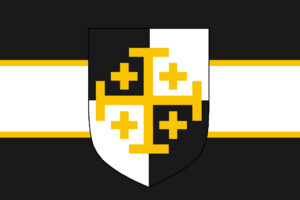
All political parties except the Creeperian Initiative have been banned in Creeperopolis since the end of the Creeperian Civil War. The Creeperian Initiative was founded on October 4, 1949 and was composed of former members from the Creeperian Peoples' Catholic Front (FCPC), Creeperian Catholic Party (PCC), National Conservative Party (PCN), Catholic Royalist Party (PRC), and Creeperian Pro-Fatherland Front (FPPC). The party arose following the end of the Creeperian Civil War which killed 40,000,000 Creeperans as an anti-communist anti-atheist reaction. The party's full name is the Nationalist Creeperian Catholic Royal Initiative and the Pro-Fatherland Front of Unification, (Creeperian Spanish: Iniciativa Real Católica Creeperiano Nacionalista y la'Frente Pro-Patria de Unificación), abbreviated NCCRI and the PFFU or IRCCN y la'FPPU. The ideology the party affirms Romerism, Absolutism, National Catholicism, and Anti-Communism.
The party supported the Creeperian Armed Forces during the 2003 Creeperian Coup D'état and recognized Alexander II as the legitimate Emperor of Creeperopolis.
The party hold all 6,123 seats on the Council of Mayors.
Due to Creeperopolis being a one-party imperial state, corruption is rampant in Creeperopolis.
Foreign Relations
Creeperopolis has foreign relations with Quebecshire, Neo Polisophos, New Gandor, Gjorka, and Greater Sacramento, along with its vassals of El Salvador and the Papal State.
Creeperopolis has been a member of the Terraconserva Council of Nations (TCN) as a founding member since October 22, 1952.
The Creeperian Transportation Ministry has placed travel bans to Xusma, Lyoa, Malgax, and Morova.
Military
The Creeperian Armed Forces (Creeperian Spanish: Fuerzas Armadas Creeperiano) are the military forces of Creeperopolis. It consists of the Army, Navy, Air Force, and Imperial Guard. The Emperor of Creeperopolis is the commander-in-chief of the Armed Forces and forms military policy with the Ministry of Defense (MoD).
From the time of its inception, the Creeperian Armed Forces played a decisive role in the history of the Creeperopolis. A sense of national unity and identity was forged as a result of victory in the Creeperian Crusade and the Deltinian War. It played a critical role in the War of the Creeperian Succession and the Creeperian Civil War.
The military maintains a heavy presence in Senvar and Senvek due to the Third Senvarian Insurgency and Mara War.
Human Rights
Yellow: 5-year imprisonment
Orange: 10-year imprisonment
Brown: 20-year imprisonment
Light Red: Life imprisonment
Dark Red: Death Penalty
Although human rights are protected by Title IV, Chapter III, Section I, Article XXV of the Creeperian Constitution: "The Empire protects the basic human rights of all individuals. (Does not apply to convicts)," it clearly states human rights do not apply convicts, and even then, upholding human rights in southern Creeperopolis is a serious issue.
It is reported that "Widespread human rights violations committed by the Romerists during the Creeperian Civil War (1933-1949), by the regimes of Romero II, Romero III, Alfonso VI, and Alexander II, and by the Armed Forces of Creeperopolis in Senvar remained unpunished." Reports also assert that the government is currently misusing anti-terrorism laws to detain and harass political opponents of the government and suspected Senvarian Liberation Front and Mara Salvatrucha members. In addition, reports drew attention to several instances of unlawful police killings, which remain fairly common. Other current issues in the past 10 years include missing convicts, failure of law enforcement to properly investigate prosecute crimes against Senvarians and Senvekians, and rendering organized labor unions illegal.
Discrimination against LGBT people in Creeperopolis is very widespread. According to 2017, 87% of Creeperans believe that homosexuality should not be accepted by society. Death penalty is enforced in southern departments with a significant Protestant/Islamic population. Although death penalty is not legal in Deltino for same-sex intercourse, many citizens of the department carry out executions regardless.
Economy
During the 1900's, Creeperopolis' economy has been hampered at times by natural disasters, such as earthquakes and volcanic eruptions, by government coup d'état's (see 2003 Creeperian Coup D'état), and by official corruption. However, since 2005, the economy has seen massive growth from 16 trillion colóns in 2003 to 96 trillion colóns in 2019.
San Salvador has the highest per capita income of all the cities in the country, and is a center of international investment.
Infrastructure
Airports
The nation's primary and largest airport is San Salvador-Romero I which handles around 50% of international flights. It replaced Miguel Cabañeras Gutiérrez International Airport as the country's main airport in 1973.
- San Salvador-Romero I: Until 1973, Creeperopolis and San Salvador was served by Miguel Cabañeras Gutiérrez International Airport, but on September 11, 1973, the airport was replaced by the Emperor Saint Romero I Adolfo Martínez Galdámez International Airport (IATA: SRA, ICAO: CSRA). Miguel Cabañeras Gutiérrez International Airport is located within the city limits and could not be expanded due to the lack of land and the proximity of the surrounding population, so the new airport was built outside the city. Emperor Saint Romero I Adolfo Martínez Galdámez International Airport lies on flat terrain and it is not surrounded by major populated areas so it can be expanded in the future (it is currently under expansion). It is located in the department of San Salvador. With 93,000,000 passengers in 2018, it was the one of the busiest airports by passenger traffic in the world.
- Adolfosburg-Adolfo III: Adolfo III Martínez International Airport is the second largest airport in Creeperopolis.
- Salvador-Salvador III: Salvador III Martínez International Airport is the third largest airport in Creeperopolis.
- San Romero-Romero II: Romero II International Airport is the fourth largest airport in Creeperopolis.
Roads
Creeperopolis has good transportation connectivity due to its extensive road network and its moderate street maintenance system. Creeperopolis' road system handles approximately 270,000,000 vehicles per day.
The main highway passing through Creeperopolis is the CR-1 (Pan-Creeperian Highway). CR-1 passes through Ciudad Chalatenango, the Papal State, San Salvador, Adolfosburg, La'Libertad, Salvador, San Romero, and Puerto del Bahía de Salvador.
Roads in the capital are called "street" if they run east-west, and "avenue" if they run north-south. Avenues to the west of this intersection have odd-number names, and to the east they have even-number names. Streets have odd-number names if they are to the north of the intersection, and even-number names if to the south.
Railroads
Rail travel in Creeperopolis is fairly common, especially between the largest cities of San Salvador, Adolfosburg, and Salvador.
The largest freight railroad is the Creeperian Railroad Networks Company.
Demographics
Ethnic Groups
Creeperans make up the largest ethnic group in Creeperopolis followed by Castillianans, Atlántidans, Salvadorans, Senvarians, Senvekians, and Deltinians.
A notable minority of 740,000 Quebecshirites live in Puerto Francisco, Salvador. Formerly called Port François, the settlement was sold and established in 1417 as a Quebecshirite trading post. It was occupied in 1611 during the Quebecshirite Civil War to prevent the colony falling into Republican hands and to ensure the Monarchists retain control. The colony was formally returned to Creeperopolis in 1624 by the Quebecshirite National Reorganization Council. The first Creeperian passport was issued to allow travel between Creeperopolis and Port François in 1417.
Languages
Creeperian Spanish is the most spoken language along with its dialects.
Largest Cities
| Rank | Department | Pop. | Rank | Department | Pop. | ||||
|---|---|---|---|---|---|---|---|---|---|
| San Salvador San Salvador  Adolfosburg |
1 | San Salvador | San Salvador | 49,000,000 | 11 | San Romero | San Romero | 8,000,000 |  Salvador  La'Libertad |
| 2 | Adolfosburg | Adolfosburg | 33,000,000 | 12 | Victoria | Atlántida | 8,000,000 | ||
| 3 | Salvador | Salvador | 22,000,000 | 13 | Ciudad Atlántida | Nuevo Atlántida | 7,000,000 | ||
| 4 | La'Libertad | La'Libertad del Norte | 17,000,000 | 14 | Port Senvar | Senvar | 6,000,000 | ||
| 5 | Ciudad San Pedro | San Pedro | 12,000,000 | 15 | Ciudad Rey Alfonso I | Deltino | 6,000,000 | ||
| 6 | Denshire | Jakiz | 11,000,000 | 16 | Puerto Atlántida | Atlántida del Sur | 6,000,000 | ||
| 7 | San Salvador del Norte | San Salvador del Norte | 11,000,000 | 17 | Tuxtla Martínez | Zapatista | 6,000,000 | ||
| 8 | Ciudad Los'Ángeles | El Salvador | 9,000,000 | 18 | Port Senvek | Senvek | 5,000,000 | ||
| 9 | Ciudad Santa María | Santa María | 8,000,000 | 19 | Puerto del Mar Atlántidano | Isla Atlántida | 5,000,000 | ||
| 10 | Chalatenango | Castilliano | 8,000,000 | 20 | San Salvador del Oeste | State of the Church | 4,000,000 | ||
Religion
The majority of the population in Creepeorpolis is Christian, Creeperian Catholicism at 95.5%. Emperor Romero I was canonized as a saint in 1983 by Pope St. John Paul II.
The remaining 3% are either Senvar-Senvekian Protestants (mainly found in the Senvar and Senvek departments) at 2.5% and Deltinian Islam (mostly in the Abdan, Deltino, Helam, and Jakiz departments) at around 0.5% of the population.
Crime
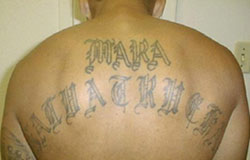
Organized crime in Creeperopolis, particularly the south, is a serious problem. Efforts to deal with this phenomenon have been insufficient.
There are an estimated 25,000 gang members at large in Creeperopolis; another 15,000 are in prison. The best-known gang, called maras in colloquial Creeperian Spanish, is Mara Salvatrucha; maras are hunted by death squads, including Sombra Negra.
National murder rates in Creeperopolis are 57.9 murders per 100,000 people per year, but in southern Creeperopolis alone, the average murder rate is 75.7 murders per 100,000 people per year. In Senvar, the average murder rate is 123.2 murders per 100,000 people per year, the highest in Creeperopolis and the highest in the world.
Senvar and Senvek are the most violent places in Creeperopolis and has been described as "beyond third world". They are also virtual anarchies ruled by gangs, insurgents, and death squads with only 35% government control.[citation needed]
Culture
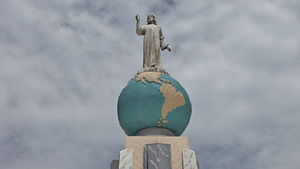
Creeperian culture dominates the country and is heavy in both traditionalist Creeperian influences. A new composite population was formed as a result of intermarrying between the native Creeperian population with the Salvadorans and Castillianans. The Creeperian Catholic Church plays an important role in the Creeperian culture. Emperor St. Romero I is a national hero for his role in resisting human rights violations that were occurring during the Creeperian Civil War.
Public Holidays
| Date | English name | Local name | Observance |
|---|---|---|---|
| February 8 | Independence Day | Día de Independencia | A celebration of the establishment of the modern kingdom of Creeperopolis and the beginning of the Creeperian Crusade. |
| March/April | Holy Week/Easter | Semana Santa | Celebrated with Carnival-like events in different cities by the large Creeperian Catholic population. |
| May 3 | The Day of the Cross | Día de la Cruz | A celebration with pre-kingdom origins, linked to the advent of the rainy season. People decorate a cross in their yards with fruit and garlands, in the belief that if they do not, the devil will appear and dance at their yard. They then go from house to house to kneel in front of the altar and make the sign of the cross. |
| May 10 | Mother's Day | Día de las'Madres | A day to celebrate motherhood, similar to many other countries Mother's Day. |
| June 17 | Father's Day | Día del Padre | A day to celebrate fatherhood, similar to other countries Father's Day. |
| September 15 | Day of the Creeperans/Coronation Day | Día de los'Creeperianos/Día de Coronación | Celebrates the establishment of the Old Kingdom of Creeperopolis in 537. It is also the traditional date of the coronation of a new King/Emperor (last celebrated in 2003). |
| September 30 | Feast Day of St. Romero | Día Festivo de San Romero I | Celebration and remembrance of Emperor Saint Romero I "the Martyr", patron saint of Creeperopolis, and a day of remembrance for the conclusion of the Creeperian Civil War. |
| October 1 | Children's Day | "Día del niño" | Celebration dedicated to the Children of the country, celebrated across the country. |
| November 1 | All Saints' Day | Día de los'Santos | A day when most people celebrate their patron saints and attend mass. |
| November 2 | Day of the Dead | Día de los'Muertos | A day when most people visit the tombs of deceased loved ones. |
| November 7–13 | National Pupusa Festival | Festival Nacional de la'Pupusa | This week is the national commemoration of the national food (Pupusa). |
| December 25 | Christmas Day/Crusaders' Day | Navidad/Día del Cruzadore | December 25 is marked as the traditional date of birth of Jesus Christ in Creeperian Catholic tradition. It is also the day that marks the end of the Creeperian Crusade. |
| December 31 | New Year's Eve | Fin del Año | The final day of the year, and the day before New Year's Day is celebrated in Creeperopolis with family reunions. |
Cuisine
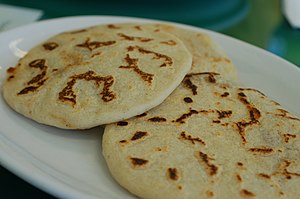
One of Creeperopolis' notable dishes is the pupusa. Pupusas are handmade corn tortillas (made of masa de maíz or masa de arroz, a maize or rice flour dough used in Creeperian cuisine) stuffed with one or more of the following: cheese (usually a soft Creeperian cheese such as quesillo, similar to mozzarella), chicharrón, or refried beans. Sometimes the filling is queso con loroco (cheese combined with loroco, a vine flower bud native to Creeperopolis).
Pupusas revueltas are pupusas filled with beans, cheese and pork. Some coastal restaurants even offer pupusas stuffed with shrimp or fish. The precise origins of the pupusa are debated, although its presence in Creeperopolis is known to predate the establishment of the Old Kingdom
Two other typical Creeperian dishes are yuca frita and panes con pollo. Yuca frita is deep fried cassava root served with curtido (a pickled cabbage, onion and carrot topping) and pork rinds with pescaditas (fried baby sardines). The Yuca is sometimes served boiled instead of fried. Pan con pollo/pavo (bread with chicken/turkey) are warm chicken-filled submarine sandwiches. The bird is marinated and then roasted with Castillianan spices and handpulled. This sandwich is traditionally served with tomato and watercress along with cucumber, onion, lettuce, mayonnaise, and mustard.
One of Creeperopolis' typical breakfasts is fried platanos (plantain/bananas), usually served with cream or sugar.
"Maria Luisa" is a dessert commonly found in Creeperopolis. It is a layered cake that is soaked in orange marmalade and sprinkled with powdered sugar.
A popular drink that Creeperans enjoy is orchata, a drink native to the Salvador. Orchata is most commonly made of the morro seed ground into a powder and added to milk or water, and sugar. Orchata is drank year-round, and can be drank at any time of day. It mostly is accompanied by a plate of pupusas or fried yuca. Orchata from Creeperopolis has a very distinct taste and is not to be confused with Atlántidan orchata, which is rice-based. Coffee is also a common morning beverage.
Other popular drinks in Creeperopolis include Ensalada, a drink made of chopped fruit swimming in fruit juice, and Kolachampan, a sugar cane-flavored carbonated beverage.
One of the most popular desserts is the cake Pastel de tres leches (Cake of three milks), consisting of three types of milk: evaporated milk, condensed milk, and cream.
See Also
- Emperor of Creeperopolis
- Creeperian Initiative
- Creeperian Civil War
- Salvadoran Revolution of 1956
- El Salvador
- Second State of the Church
- October 16 Regime
Other Nations
References
- ↑ https://www.nationstates.net/nation=creeperopolis/detail=factbook/id=1233302#HRC
- ↑ https://www.nationstates.net/nation=creeperopolis/detail=factbook/id=1244928
- ↑ https://www.nationstates.net/nation=creeperopolis/detail=factbook/id=1174980
- ↑ https://www.nationstates.net/nation=creeperopolis/detail=factbook/id=1174980
- ↑ https://www.nationstates.net/nation=creeperopolis/detail=factbook/id=1174980










